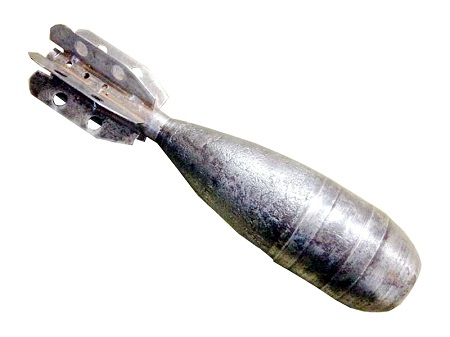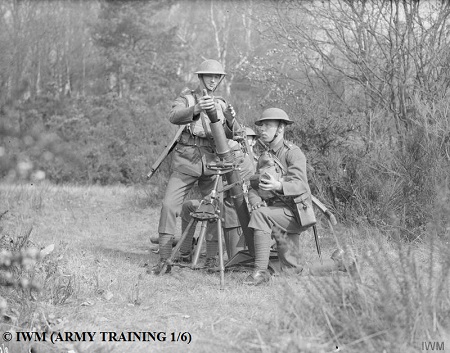The 3 inch mortar was first introduced in the early 1930's and was a replacement for the Stokes mortar of WW1. Although referred to as the 3 inch, it was in fact just over 3.2 inches in calibre, making it closer to the French 81 mm mortar in actual size.
The experiences of WW1 clearly demonstrated that the British Army required close artillery support in the field; originally this was intended to be provided by specialist artillery, although the costs involved soon saw this concept being shelved in favour of a re-vamp of the Stokes MkI Mortar. Thus the MkII Mortar was developed and was the standard unit issued when war broke out in 1939. The MkII unfortunately proved to be under-powered when compared to the German 81 mm GW34 and so in the post-Dunkirk era of WW2, the unit underwent a series of upgrades, starting with the propellants and ending up with an almost complete redesign. The MkII was eventually replaced in the 1960s.


The experiences of WW1 clearly demonstrated that the British Army required close artillery support in the field; originally this was intended to be provided by specialist artillery, although the costs involved soon saw this concept being shelved in favour of a re-vamp of the Stokes MkI Mortar. Thus the MkII Mortar was developed and was the standard unit issued when war broke out in 1939. The MkII unfortunately proved to be under-powered when compared to the German 81 mm GW34 and so in the post-Dunkirk era of WW2, the unit underwent a series of upgrades, starting with the propellants and ending up with an almost complete redesign. The MkII was eventually replaced in the 1960s.

Unfortunately, examples of the British MkII mortar are both rare and expensive, so we have thus far not been able to obtain an example of the actual launcher. We have, however, acquired an example of a 1937-dated training round. These were essentially standard rounds, but instead of being filled with TNT, concrete was used, in order to simulate the weight and flight characteristics of an actual live round.

